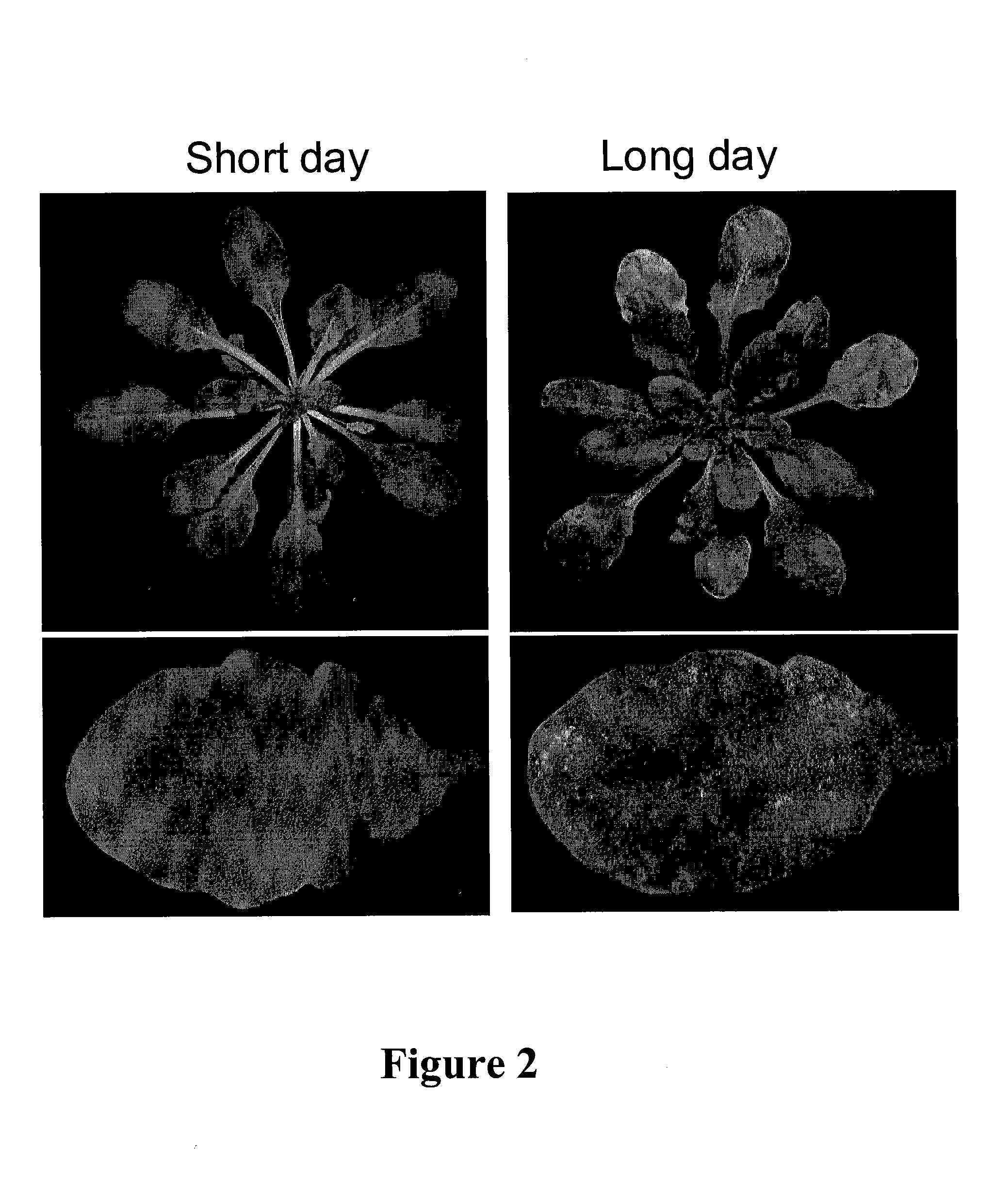Plants with reduced expression of phosphatase type 2c gene for enhanced pathogen resistance
- Summary
- Abstract
- Description
- Claims
- Application Information
AI Technical Summary
Benefits of technology
Problems solved by technology
Method used
Image
Examples
examples
Interaction Between RPW8 and DAPP1 in Yeast-two-hybrid System
[0126] There are two functional homologous genes at the RPW8 locus and they are named RPW8.1 and RPW8.2 (Xiao et al., 2001). To identify RPW8-interacting proteins, an Arabidopsis yeast-two-hybrid cDNA fusion library (a gift from J. D. Jones, Sainsbury Laboratory, Norwich, England) constructed based on the Matchmaker LexA two-hybrid system (CLONTECH) was screened using RPW8.2 as bait. From ˜4×106 cDNA clones screened, six positive clones (indicated by the activation of LacZ and LEU2 reporter genes) predicted to encode the same protein phosphatase gene (At1g22280, named DAPP1 in the text) were obtained. DAPP1 was subsequently shown to also interact with RPW8.1 in the yeast two hybrid system.
Down-regulation of DAPP1 by RNAi in Arabidopsis Leads to Activation of Defenses
[0127] A 5′primer (CGAATTCATGGGAAAATTTTGTTGCTTCACT) (SEQ ID NO; 3) and a 3′ primer (CGGGATCCTC-ATCTGAATCGGACCACGACA) (SEQ ID NO. 4) were used to amplify the...
PUM
| Property | Measurement | Unit |
|---|---|---|
| Fraction | aaaaa | aaaaa |
| Fraction | aaaaa | aaaaa |
| Fraction | aaaaa | aaaaa |
Abstract
Description
Claims
Application Information
 Login to View More
Login to View More - R&D
- Intellectual Property
- Life Sciences
- Materials
- Tech Scout
- Unparalleled Data Quality
- Higher Quality Content
- 60% Fewer Hallucinations
Browse by: Latest US Patents, China's latest patents, Technical Efficacy Thesaurus, Application Domain, Technology Topic, Popular Technical Reports.
© 2025 PatSnap. All rights reserved.Legal|Privacy policy|Modern Slavery Act Transparency Statement|Sitemap|About US| Contact US: help@patsnap.com



